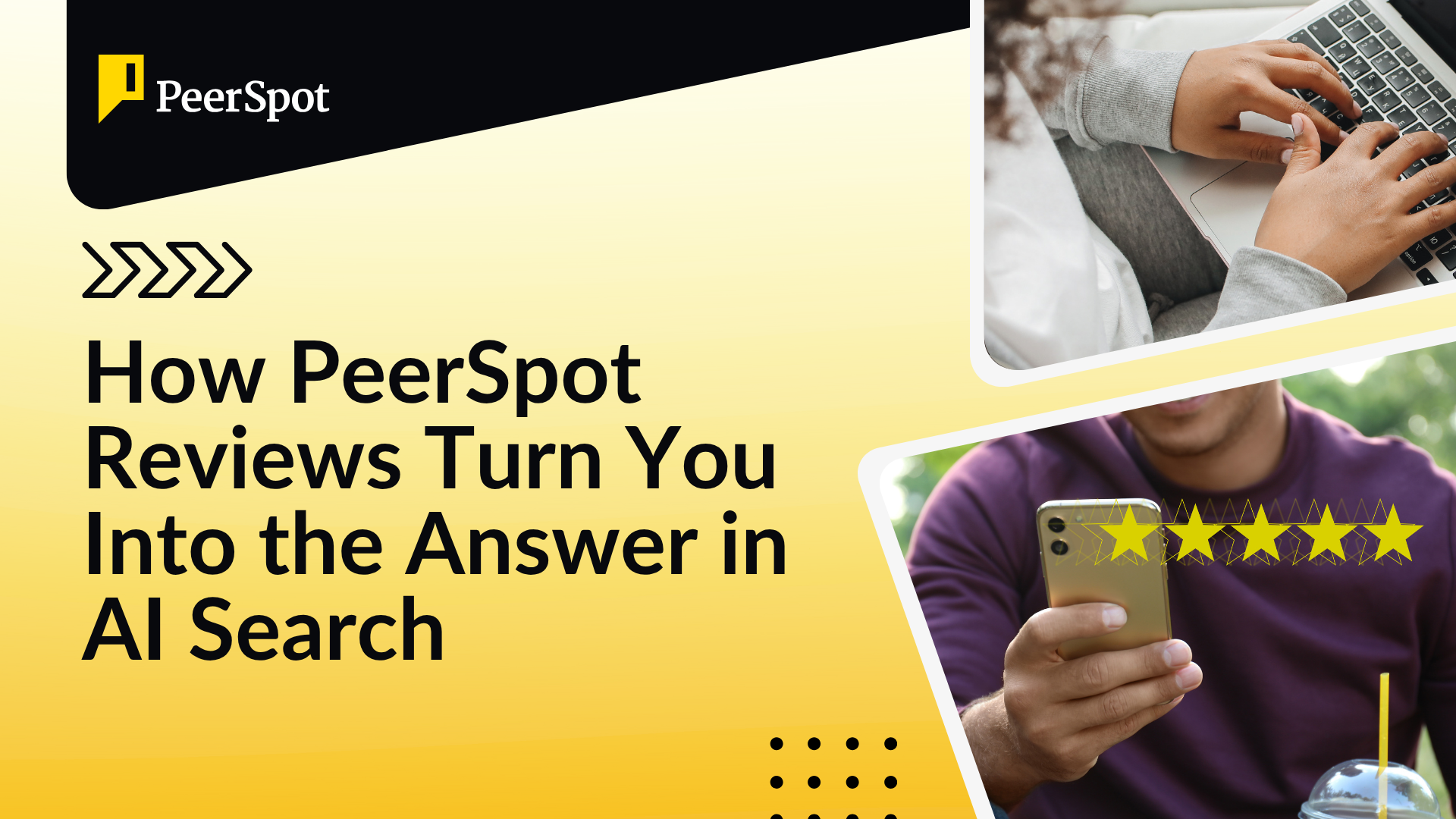How PeerSpot Reviews Turn You Into the Answer in AI Search

The shift: buyers ask AI for decisions, not just definitions
Enterprise buyers are changing how they research software. Instead of scrolling through ten blue links, they ask AI systems direct, bottom-funnel questions like:
“What should I replace X with?” or “Best DLP solution for a 1,000-employee company?”
When those models generate an answer, they rely on structured, verifiable practitioner data. That’s exactly where PeerSpot shows up.
In a recent session with Proofpoint, we ran multiple LLM prompts across common security buying paths. The pattern was clear: when questions required deployment details, peer company size, and real outcomes, AI consistently surfaced PeerSpot.
As one ChatGPT response explained: PeerSpot is one of the few places where verified CISOs in 500–5,000-employee organizations share concrete results — setup time, phishing reduction, and measurable business impact. That’s the kind of signal large-language models use to make confident recommendations.
Why PeerSpot rises in AI-driven answers
1) Long-form, interview-style reviews
PeerSpot reviews go beyond star ratings. Analyst-guided interviews, now supported by a voice AI agent, create narrative-rich feedback with context, deployment challenges, and measurable results. These deeper data points give AI models the material they can confidently quote and rank. With buyers circumventing traditional keyword searches and instead leveraging LLMs through question-based prompts, the structure of PeerSpot interviews mirrors how buyers are now “interviewing” LLMs themselves — creating a near one-to-one overlap between how insights are captured and how answers are delivered.
2) Verified practitioners at relevant scale
LLMs prioritize content that matches buyer intent. Because PeerSpot reviews include company size, industry, and tech stack, AI systems can align insights with the persona behind the query — “people like me.”
3) Comparative context
Most AI prompts mirror real buyer behavior: “Proofpoint vs Varonis,” “Alternatives to Mimecast.” PeerSpot’s side-by-side experiences and vendor comparisons are exactly what models retrieve and reference when generating these answers.
The AWS Marketplace Multiplier
PeerSpot is the sole provider of first-party reviews inside AWS Marketplace, and those are the only reviews that directly influence Marketplace star ratings and search rankings.
Every verified review collected through PeerSpot strengthens your visibility in two high-trust ecosystems where buyers — and LLMs — go to validate software.
AWS Marketplace reviews: When a customer deploys through AWS, their PeerSpot-powered review appears directly on your Marketplace listing. These first-party reviews are the only ones that count toward your product’s official AWS star rating and Marketplace ranking.
PeerSpot reviews: The same authentic customer feedback also lives on your PeerSpot profile, where it drives SEO performance, demand generation, and engagement beyond AWS.
The flywheel: capture credible reviews once → publish in two trusted locations (AWS Marketplace + PeerSpot) → boost visibility, credibility, and proof signals → get discovered faster in both human and AI-driven searches.
Custom questions create bottom-funnel coverage
Generic questions lead to generic content — and generic content rarely gets surfaced in AI answers. PeerSpot enables marketers to design custom questions that capture the exact proof points buyers care about.
Examples include:
- “How would you assess visibility into internal spam attacks due to API-based architecture?”
- “Did behavioral learning reduce the number of attacks that got through? If yes, by how much per week or month?”
These are the kinds of questions CISOs and IT buyers type into ChatGPT when evaluating solutions. When reviews on PeerSpot include that same specificity, models can lift the exact phrasing and data points to inform their recommendations.
Capturing more — faster
Modern review capture is built for scale and credibility:
- Voice AI agent: reviewers record their answers conversationally in minutes.
- Analyst interviews: provide deeper, editorial-quality narratives that can be repurposed across marketing channels.
- Typed entry via AWS Marketplace: for customers who prefer to write directly.
For live events or customer summits, teams often use iPads with directional microphones or QR codes that let attendees leave quick, verified voice reviews on the spot.
What good looks like in the LLM era
- Reviews that read like mini case studies, not quick star ratings
- Quotes that quantify impact: “phishing down 80%,” “deployed in hours,” “reduced SOC workload”
- Clear buyer context — company size, use case, and environment
- Comparative insights that answer “Why switch from X to Y?” in real customer language
When your customer content looks like this, AI systems recognize it as credible, high-value evidence — and use it to make you the answer.
In an era where search is shifting from links to language, PeerSpot reviews are your brand’s proof inside the models themselves — where the next generation of buying decisions are already happening.
